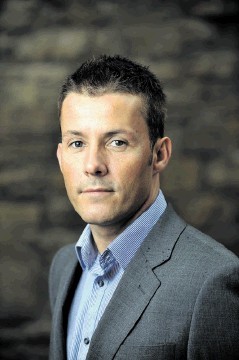
Imagine working as part of a Formula 1 pit crew having to change four tyres and make adjustments in around five seconds – do you think you could achieve this if you didn’t work as a perfectly-tuned team working together seamlessly?
Wherever you work, it’s vital to have a cohesive work environment and a balanced dynamic, according to Dean Hunter, managing director of HR consultancy firm Hunter Adams.
Teambuilding is time and effort well spent and should not be viewed simply as an excuse to visit the golf course, he explains.
For many the term “teambuilding” can instil a wave of dread and raises the spectre of being forced to take part in an activity in which you’ll be taken out of your comfort zone. However, the benefits these activities can bring to a company are potentially huge.
In today’s economic climate, businesses need every employee to contribute to its success. A small investment in a teambuilding activity could save precious time wasted on trivial issues by allowing employees to bond in an unfamiliar environment.
The best way to resolve team conflicts is not a formal dressing-down, but putting employees in a situation where they have to work together to overcome a challenge and work out the solution.
Teambuilding should be part of a company’s annual calendar of events and managers should ensure time is booked.
In 1965 Bruce Tuckman, a professor of educational psychology and an expert in group dynamics, first published his approach to teambuilding. While Hunter Adams doesn’t subscribe to every theory in the HR textbook, Tuckman identified useful characteristics regarding what makes people work best in teams.
He identifies four stages of group formation and the unequivocal need for team members to work alongside each other in a professional manner. The four stages are Forming, Storming, Norming and Performing.
During the forming stage, individuals gather first impressions, swap stories and share histories. In the spectrum of teambuilding, not much work is done during this stage as the foundations are being built.
The storming stage is where the roadblocks begin to appear which can lead to low morale and a lack of motivation. Different ideas begin to compete with each other and everyone wants to be recognised as right. Many teams get stuck here and the communication begins to break down.
Teams who make it to stage three, norming, are well on the way to achieving the ultimate goal. This stage sees a team working towards a common task, which can mean surrendering individual goals and ideas.
Finally, performing. Teams are working together to deliver the overall goals of a business.
Theory is logical, but the key to it being successful is choosing an activity that will meet the overall aim. Employers must choose an activity where everyone will be willing to participate, regardless of gender or age.
Sporting activities have proven to be some of the most successful teambuilding exercises. A company will have better success with their teambuilding day if they take their staff to an activity that is not a regular hobby for many and is something the majority will potentially be trying for the first time.
A perfect example of such an activity is the new high ropes course at Aberdeen’s Transition Extreme. The course includes many challenging activities that not only requires people to push their own boundaries and overcome their own mental blocks, but work as a team to successfully conquer the various elements.
Group chief executive of Dana Petroleum, Dr Marcus Richards, said: “Dana has a new executive team, a huge amount of energy and clear strategy to double the size of the company over five years.
With the large number of people joining the Aberdeen office in the last six months, building a cohesive culture is essential for us to achieve our goals.
Team-building activities, such as those offered by Transition Extreme, ensure all our employees get to know each other in a challenging but fun environment.”
Recommended for you
